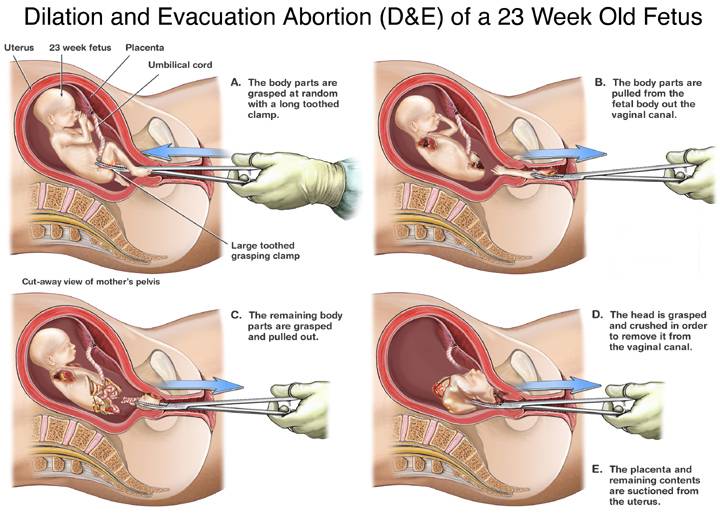The Bloomberg headline was shocking: “Grisly Language Propels Kansas Anti-Abortion Bill as U.S. Model.”
Bloomberg journalist Esme E. Deprez (below) was tasked with informing readers about the Unborn Child Protection from Dismemberment Act, which last month was introduced in both Kansas and Oklahoma. The writing experience obviously wasn’t pleasant for her. The story began:
Activists in Kansas and Oklahoma are seeking to outlaw a common abortion technique by using the text of legislative bills to lay bare its graphic details, a tactic that may spread across the U.S.
Republican lawmakers in both states are pushing to ban what they call “dismemberment abortion” with language supplied by National Right to Life, a Washington-based advocacy group. Opponents say the bills inaccurately describe what medical literature calls dilation and evacuation, a method used in 96 percent of second-trimester terminations, according to the National Abortion Federation….
The aim is to rebrand a medical procedure with a new and unsettling name, include clinical details of what it entails in a bill and let lawmakers’ reactions guide the way they vote.
But, of course. To be forced to describe a “technique” that dismembers small, recognizable humans – Dilation and Evacuation abortions – can’t be fun. Which is the point.
Deprez preempted pro-life depictions of D&E abortions (below) with a reminder that they are “common… used in 96% of second-trimester abortions.”
In other words, everybody’s doing them, so they must be okay.
Yet pro-lifers are making D&Es sound so… depraved. Deprez tried to make us the bad guys for “deploying grisly language… to rebrand a medical procedure with a new and unsettling name.” I’ll own that.
Indeed, here is how the bills describe the “medical procedure” they aim to ban:
… to dismember a living unborn child and extract him or her one piece at a time from the uterus through use of clamps, grasping forceps, tongs, scissors or similar instruments that, through the convergence of two rigid levers, slice, crush, and/or grasp a portion of the unborn child’s body to cut or rip it off.
No surprise, abortion proponents told Deprez the bills “inaccurately describe” D&E abortions with “misleading and inflammatory language.”
Which raises the obvious follow-up question: Well then, what is an accurate description?
Click here to sign up for daily pro-life news alerts from LifeNews.com
Which – surprise – Deprez didn’t ask.
But here’s another surprise: a late-term abortionist who upstaged pro-lifers with an even more graphic description of D&E abortions – LeRoy Carhart.In his dissent after the U.S. Supreme Court narrowly overturned Nebraska’s Partial Birth Abortion Ban in 2000, Justice Anthony Kennedy quoted testimony by Carhart (I’m removing footnote references and adding paragraph breaks for ease of reading):
As described by Dr. Carhart, the D&E procedure requires the abortionist to use instruments to grasp a portion (such as a foot or hand) of a developed and living fetus and drag the grasped portion out of the uterus into the vagina.
Dr. Carhart uses the traction created by the opening between the uterus and vagina to dismember the fetus, tearing the grasped portion away from the remainder of the body. The traction between the uterus and vagina is essential to the procedure because attempting to abort a fetus without using that traction is described by Dr. Carhart as “pulling the cat’s tail” or “drag[ging] a string across the floor, you’ll just keep dragging it. It’s not until something grabs the other end that you are going to develop traction.”
The fetus, in many cases, dies just as a human adult or child would: It bleeds to death as it is torn from limb from limb. The fetus can be alive at the beginning of the dismemberment process and can survive for a time while its limbs are being torn off. Dr. Carhart agreed that “[w]hen you pull out a piece of the fetus, let’s say, an arm or a leg and remove that, at the time just prior to removal of the portion of the fetus, … the fetus [is] alive.”
Dr. Carhart has observed fetal heartbeat via ultrasound with “extensive parts of the fetus removed,” and testified that mere dismemberment of a limb does not always cause death because he knows of a physician who removed the arm of a fetus only to have the fetus go on to be born “as a living child with one arm.” At the conclusion of a D&E abortion no intact fetus remains. In Dr. Carhart’s words, the abortionist is left with “a tray full of pieces.”
Well, ack. Talk about “inflammatory language.”
Quoting Deprez again:
“Abortion care can be, in the abstract, deeply upsetting and the anti-abortion movement using the word ‘dismemberment’ is not an accident,” said Carole Joffe, a reproductive health sociologist at the University of California at San Francisco. “It puts the pro-choice movement on the defensive.”
And why not?
LifeNews.com Note: Jill Stanek fought to stop “live birth abortions” after witnessing one as an RN at Christ Hospital in Oak Lawn, Illinois. That led to the Born Alive Infants Protection Act legislation, signed by President Bush, that would ensure that proper medical care be given to unborn children who survive botched abortion attempts.








